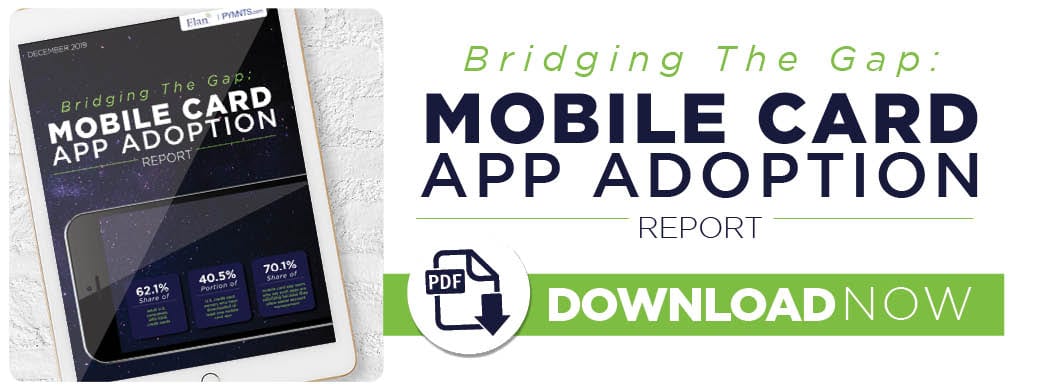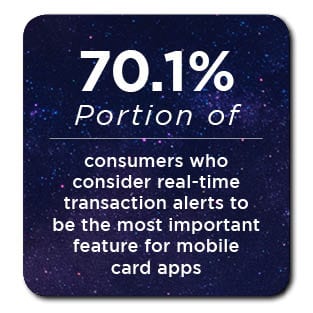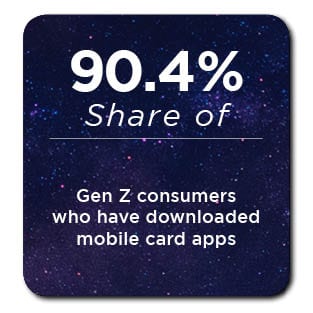 Getting consumers to download new apps can be a tough sell — crowded as the smartphone screens of many already are these days. It may be even more challenging to get them to use new apps on a regular basis before they are banished from their home screens.
Getting consumers to download new apps can be a tough sell — crowded as the smartphone screens of many already are these days. It may be even more challenging to get them to use new apps on a regular basis before they are banished from their home screens.
However, at least one category of apps appears to be bucking this trend: mobile credit card apps, which enable consumers to check account balances, redeem rewards and receive real-time transaction alerts, among a myriad of other functions. More than 40 percent of U.S. consumers have downloaded card apps, which works out to more than 102 million people. What’s more, consumers are actually using card apps, as 60.7 percent use them several times per week, and 29.4 percent use them at least once per day.
These are among the key findings of the Bridging The Gap: Mobile Card App Adoption Report, a PYMNTS study conducted in partnership with Elan. The Report surveyed nearly 2,000 U.S. consumers across a range of demographic groups to better understand their use of and attitudes toward mobile credit card apps, and the features they consider most compelling.
 PYMNTS’ research suggests that consumers consider smartphone apps as natural companions to their credit cards, two items they rarely leave home without. Card apps give users immediate access to account and transaction information when they need it — not just once a month in a paper statement. Indeed, two of the most widely popular app features include the ability to view credit card statements (which was considered important by 68.3 percent of survey respondents) and view recent card activity (cited by 65.6 percent).
PYMNTS’ research suggests that consumers consider smartphone apps as natural companions to their credit cards, two items they rarely leave home without. Card apps give users immediate access to account and transaction information when they need it — not just once a month in a paper statement. Indeed, two of the most widely popular app features include the ability to view credit card statements (which was considered important by 68.3 percent of survey respondents) and view recent card activity (cited by 65.6 percent).
If such features are table stakes for compelling card apps, two functions sweeten the pot. The single, most important card app feature in the view of consumers is real-time transaction alerts, cited by 21.1 percent. This is followed by fingerprint login, cited by 19.2 percent. These standout features notably make use of the built-in capabilities of smartphones, placing real-time account information at users’ fingertips, while allowing them to avoid the frustration of passwords or fine print.
 The PYMNTS research indicates that consumers are not only increasingly comfortable with using smartphones as financial management tools, but seem to regard them as indispensable for this purpose. This is especially the case for younger generations. More than 90 percent of Gen Z consumers — those aged 18 to 21 — report having downloaded card apps, compared to 24 percent of baby boomers and seniors. Younger consumers also report being more enthusiastic about numerous app features, including fingerprint login.
The PYMNTS research indicates that consumers are not only increasingly comfortable with using smartphones as financial management tools, but seem to regard them as indispensable for this purpose. This is especially the case for younger generations. More than 90 percent of Gen Z consumers — those aged 18 to 21 — report having downloaded card apps, compared to 24 percent of baby boomers and seniors. Younger consumers also report being more enthusiastic about numerous app features, including fingerprint login.
This is important because younger consumers tend to be trendsetters when it comes to the adoption of new technologies. Their early adoption suggests that interest in mobile card apps will only grow in the years to come. At the same time, younger consumers can also be fickle. This underscores the need for issuers to make card apps as compelling as possible, lest the consumers move on to the latest, greatest app to come along.
To learn more about the key drivers of mobile card app satisfaction, download the report.